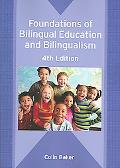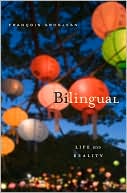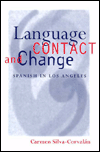Language Development: Monolingual and Bilingual Acquisition
Written by a team of speech-language pathologists with a plethora of experience in both the school and university setting, this new text for language development addresses the topic of language acquisition among monolingual and bilingual populations, teaches that all children and students develop and learn language differently and at different paces, and will stimulate readers’ overall understanding of the complex nature of language development. Discussion includes language foundations and...
Search in google:
Written by a team of speech-language pathologists with a plethora of experience in both the school and university setting, this new text for language development addresses the topic of language acquisition among monolingual and bilingual populations, teaches that all children and students develop and learn language differently and at different paces, and will stimulate readers’ overall understanding of the complex nature of language development. The text covers language acquisition issues for infants, pre-school, school age, and adolescent language populations. Every chapter incorporates classroom strategies, numerous case studies, instructional strategies, and reflection questions among its features and content. Divided into three main sections: 1). Language Foundations and Development of Language; 2). Content Subject Development; and 3.) Home and School Language Programs, the text also discusses information on the different components of language including: phonology, morphology, semantics, syntax, and pragmatics. A helpful resource for general education classroom teachers, special education teachers, speech-language pathologists, counselors, school psychologists, school administrators and parents alike, the authors prepare their readers to make a positive impact on all students’ academic success and their lives.
I. LANGUAGE FOUNDATIONS AND DEVELOPMENT OF LANGUAGE1. Neurological Aspects of Speech and Language Development&#lt;blockquote&#gt;The BrainSpeech Development and the BrainLanguage Development and the BrainConcluding RemarksCase Study PerspectivesChapter Reflection Questions2. Infant and Preschool Language Development&#lt;blockquote&#gt;PhonologySemanticsSyntax and MorphologyPragmaticsInstructional StrategiesConcluding RemarksChapter Reflection Questions3. First Language Development&#lt;blockquote&#gt;Acquisition of PhonologyAcquisition of MorphologyAcquisition of Semantic KnowledgeAcquisition of SyntaxAcquisition of Pragmatic Skills and AbilitiesCase Study PerspectivesInstructional StrategiesConcluding RemarksChapter Reflection Questions4. Second Language Acquisition: A Focus on Spanish-English Speakers&#lt;blockquote&#gt;DefinitionsSpanish Phonology and Phonological TransferMorphological and Semantic TransferenceSyntactic and Pragmatic TransferenceCase Study PerspectivesInstructional StrategiesConcluding RemarksChapter Reflection Questions5. School Age Language Development&#lt;blockquote&#gt;Home Language vs. School and Classroom LanguagePhonological Development in the Primary School YearsMorphological Development in the Primary School YearsSemantic DevelopmentSyntactic Development: Noun and Verb PhraseClassroom Discourse or Pragmatic DemandsNarrative DevelopmentCross-Cultural Narrative Similarities and DifferencesThe English as a Second Language Classroom vs. the General Education ClassroomCase Study PerspectivesConcluding RemarksChapter Reflection Questions6. Adolescent Language&#lt;blockquote&#gt;The Nature of AdolescenceAdolescent Spoken Language DevelopmentAdolescent Literacy DevelopmentAdolescent Motivation and BehaviorSchool Demands and Curricular Expectations for Adolescent StudentsCharacteristics of Language Impairment in Adolescents with ExceptionalitiesIntervention/Clinical StrategiesConcluding RemarksChapter Reflection QuestionsII. CONTENT SUBJECT DEVELOPMENT7. Reading Development in the First LanguageReading and Policy Initiatives in the 21st Century&#lt;blockquote&#gt;Theoretical PerspectivesReading DevelopmentCase Study PerspectivesInstructional Suggestions and StrategiesConcluding RemarksChapter Reflection Questions8. Reading and Writing Development for Bilingual Children (L1 and L2)&#lt;blockquote&#gt;How Literacy in the First Language Affects Literacy in the Second Language (Spanish)Reading Development in Other LanguagesWriting and Bilingual StrategiesBrain Regions for Bilingual ReadersCase Study PerspectivesInstructional StrategiesConcluding RemarksChapter Reflection Questions9. Writing Development&#lt;blockquote&#gt;The Writing ProcessWriters' WorkshopWriting and Spelling DevelopmentModifications for Children with Impairments and DisabilitiesConcluding RemarksCase Study PerspectivesChapter Reflection QuestionsIII HOME AND SCHOOL LANGUAGE PROGRAMS10. Home and School Language Matches and Mismatches&#lt;blockquote&#gt;Cultural InfluencesParental Roles in Communication and Child RearingSchool ExpectationsCase StudiesConcluding RemarksChapter Reflection Questions11. Exceptional Needs Children&#lt;blockquote&#gt;Education ReformInclusion ModelsCase Study PerspectivesInstructional SuggestionsInstructional StrategiesConcluding RemarksChapter Reflection Questions12. School Language Programs for Bilingual Children&#lt;blockquote&#gt;Educational Bilingual Program Options and Instructional ApproachesFundamental Instructional ApproachesCritical IssuesCase Study PerspectivesInstructional StrategiesConcluding RemarksChapter Reflection Questions








